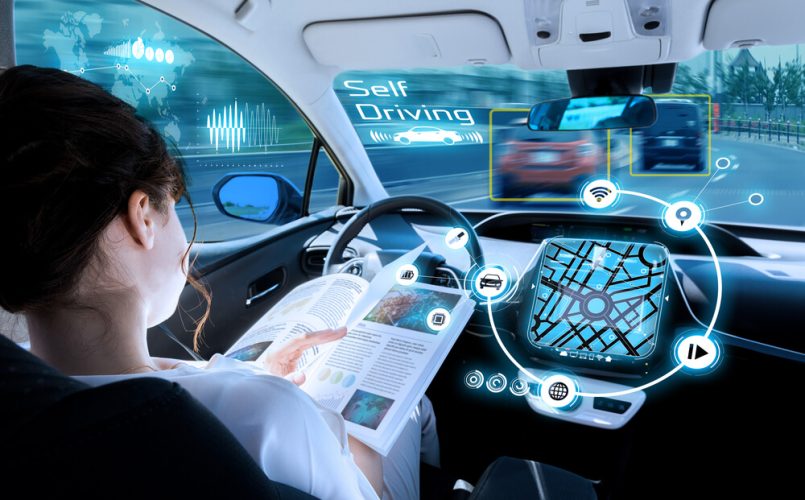Autonomous vehicles, often referred to as self-driving cars, have rapidly moved from the realm of science fiction to a tangible reality. With significant advancements in technology and increased investment from both private and public sectors, these vehicles are poised to revolutionize transportation. However, alongside their promising benefits come a host of risks and challenges that must be addressed. This comprehensive exploration delves into the advantages and potential drawbacks of autonomous vehicles, providing a nuanced view of their impact on society.
Introduction to Autonomous Vehicles
Autonomous vehicles (AVs) are equipped with advanced sensors, cameras, and artificial intelligence (AI) systems that allow them to navigate roads and traffic without human intervention. These vehicles range from those with basic driver assistance features to fully autonomous models capable of operating independently in all conditions. The goal of AV technology is to enhance safety, efficiency, and convenience in transportation.

Benefits of Autonomous Vehicles
1. Enhanced Safety
One of the most compelling benefits of autonomous vehicles is the potential for significantly improved road safety. Human error is responsible for the majority of traffic accidents, and AVs are designed to minimize these errors. Key safety features include:
- Advanced Driver Assistance Systems (ADAS): These systems include features such as adaptive cruise control, lane-keeping assistance, and automatic emergency braking. They help in reducing accidents caused by human mistakes, such as speeding, tailgating, or distracted driving.
- 24/7 Monitoring: Autonomous vehicles continuously monitor their surroundings with sensors and cameras, enabling them to detect and respond to potential hazards more quickly than a human driver.
- Predictive Analytics: AVs use predictive algorithms to anticipate and avoid potential collisions by analyzing patterns in the behaviour of other road users.
2. Reduced Traffic Congestion
Autonomous vehicles have the potential to alleviate traffic congestion in several ways:
- Optimized Traffic Flow: AVs can communicate with each other and with traffic management systems to optimize driving patterns, reduce bottlenecks, and improve traffic flow.
- Efficient Route Planning: Using real-time data and advanced algorithms, AVs can select the most efficient routes, avoiding congested areas and minimizing travel time.
- Reduced Traffic Accidents: Fewer accidents mean fewer traffic jams caused by collisions or breakdowns, contributing to smoother traffic conditions.
3. Improved Accessibility
Autonomous vehicles offer enhanced mobility for individuals who are unable to drive due to age, disability, or other reasons:
- Independence for the Elderly and Disabled: AVs provide a new level of independence for those who might otherwise rely on caregivers or public transportation.
- Increased Mobility Options: By providing alternative transportation options, AVs can improve the quality of life for individuals with limited access to traditional forms of transportation.
4. Environmental Benefits
The environmental impact of autonomous vehicles is an important consideration:
- Increased Adoption of Electric Vehicles: Many AVs are electric or hybrid, which helps reduce emissions and dependence on fossil fuels.
- Optimized Driving: Efficient route planning and smoother driving patterns can lead to reduced fuel consumption and lower greenhouse gas emissions.
- Reduced Parking Demand: AVs can drop off passengers and then relocate to less congested areas, reducing the need for extensive parking infrastructure.
5. Economic Benefits
The economic impact of autonomous vehicles extends to various sectors:
- Cost Savings: AVs can reduce transportation costs by eliminating the need for a human driver, reducing insurance premiums, and decreasing vehicle wear and tear.
- New Business Opportunities: The rise of AVs creates new opportunities in sectors such as technology development, data analysis, and fleet management.
- Increased Productivity: Autonomous vehicles can provide more productive use of time during commutes, allowing passengers to work, relax, or engage in other activities while travelling.

Risks and Challenges of Autonomous Vehicles
While the benefits of autonomous vehicles are substantial, some significant risks and challenges need to be addressed:
1. Technical Limitations
The technology behind autonomous vehicles is still evolving, and several technical challenges remain:
- Sensor and Algorithm Limitations: Current sensors and algorithms may struggle with complex driving conditions, such as poor weather, unusual road scenarios, or interactions with non-standard road users.
- Cybersecurity Risks: Autonomous vehicles are highly dependent on digital systems and connectivity, making them vulnerable to cyberattacks that could compromise safety and privacy.
- Sensor Reliability: Ensuring that sensors and cameras function accurately in all conditions is crucial for the safe operation of AVs. Malfunctions or limitations in sensor technology could lead to accidents.
2. Ethical and Legal Issues
The introduction of autonomous vehicles raises several ethical and legal questions:
- Liability and Insurance: Determining liability in the event of an accident involving an AV is complex. Questions arise about who is responsible: the manufacturer, the software developer, or the vehicle owner?
- Ethical Dilemmas: AVs must make decisions in scenarios where accidents are unavoidable. Programming these vehicles to handle such ethical dilemmas poses significant challenges and may lead to contentious debates.
- Regulation and Compliance: The legal framework for AVs is still being developed, and there are ongoing discussions about the standards and regulations that should govern their operation.
3. Impact on Employment
The widespread adoption of autonomous vehicles could have profound implications for employment:
- Job Losses: The displacement of professional drivers, such as truck drivers, taxi drivers, and delivery personnel, could lead to significant job losses in the transportation sector.
- Economic Disruption: The transition to AVs may disrupt various industries and require substantial investments in retraining and workforce development.
- Socioeconomic Disparities: The impact of AVs on different segments of the population may vary, potentially exacerbating existing socioeconomic disparities.
4. Social and Behavioral Impacts
The integration of autonomous vehicles into society may have various social and behavioural effects:
- Changes in Driving Behavior: The presence of AVs could alter driving patterns and behaviours, potentially leading to new forms of road use and interactions between human drivers and AVs.
- Acceptance and Trust: Building public trust in AV technology is crucial. Scepticism and resistance to adopting new technologies may affect the pace of their integration into daily life.
- Urban Planning and Infrastructure: The adoption of AVs may necessitate changes in urban planning and infrastructure, including the design of roads, parking facilities, and traffic management systems.
5. Environmental Concerns
While AVs have the potential to offer environmental benefits, there are also concerns:
- Energy Consumption: The energy demands of AVs, particularly in terms of data processing and connectivity, may offset some of the environmental advantages of reduced fuel consumption.
- Resource Use: The production and disposal of AVs and their components may have environmental impacts, including the use of rare materials and the challenges associated with recycling.
Autonomous vehicles represent a transformative development in transportation, offering a range of benefits from enhanced safety and reduced traffic congestion to improved accessibility and economic advantages. However, they also pose significant risks and challenges, including technical limitations, ethical and legal issues, employment impacts, and potential social and environmental consequences.





